 With so many new people joining the ranks of the Zentangle Zealots, the inevitable enthusiasm is beginning to raise questions about the fair use of tangle patterns in art for sale, as well as create some outright copyright infringement issues. It’s time to address this important topic so we’re all on the same page.
With so many new people joining the ranks of the Zentangle Zealots, the inevitable enthusiasm is beginning to raise questions about the fair use of tangle patterns in art for sale, as well as create some outright copyright infringement issues. It’s time to address this important topic so we’re all on the same page.
Posting Pattern Steps
In several recent instances, enthusiasts eager to share their newly-found passion have “appropriated” (aka stolen) the “how-to” steps images from the pattern creators/copyright holders’ websites, or drawn their own version of the how-to steps, and posted them on their own blog or website. Or, as is happening with TanglePatterns, posting images from this site on their own blog or website. To be perfectly blunt, this is a legal no-no. This is digital theft.
You should be aware that you must obtain the creator/copyright holder’s permission first, and simply stating you have permission is not sufficient. You must actually obtain permission. The reason the pattern creators post the steps on their own websites is because they have gone to the considerable trouble of creating that post so that people will visit THEIR website to view those images and everything else their sites have to offer. So effectively by posting their work on your site, you are taking away their visitors.
While you are free to draw those steps for your own personal use, or even link to the steps on the owner’s site as I do here on TanglePatterns, you must not post or publish the steps in any form without first getting written permission from the copyright holder.
You can of course post your own drawings incorporating the patterns, but not the steps.
Selling Art Incorporating Tangles, and Teaching
Terry Davis of Dixon CA, recently wrote asking some excellent questions that must surely cross everyone’s mind sooner or later.
If I use any Zentangle pattern incorporated in my art (i.e. not by itself) do I 1. have to name the person/patterns I used and 2. if I do happen to sell something that has some Zentangle work in it, or is made of all Zentangle patterns, am I responsible to name all the people/patterns I used?
These were questions I was unprepared to answer so I consulted CZT® Sandy Bartholomew, author of AlphaTangle, Totally Tangled, and Yoga for Your Brain. Sandy was very helpful in clearly spelling out the copyright-related issues.
- When you create a piece of art in any form that incorporates a tangle/pattern, even sold on art and products, you do not have to label the patterns or credit their creators. [My side note: giving credit does bring good karma.]
- However, if you’re going to print/publish/sell tangles/patterns and/or their steps, you must obtain permission from the creator (copyright holder) first. Teachers do not need permission, they just need to give credit.
Copying From Books
Every book has a copyright notice printed right up front that spells out the legal conditions under which you may use material from it.
Sandy’s latest contains an “Author’s Note” that interprets the legalese into plain English: “In other words, you may not copy, by any means, any pages from this book. But you should feel free to be inspired by the projects, tangles and ideas, and to apply them in your own work. If you teach, please give credit.”
Simple Guidelines
These are pretty simple, straightforward guidelines that ensure we respect the ownership rights of the creatives who generously provide inspiration to us all. I hope it helps answer any questions you might have had.
And as Sandy points out, “Lastly, when in doubt, ask.”
* * *
PS – Please note that I’m not a lawyer and this information is intended as a guideline. Feel free to link to this page on your blog or website. For more information on TanglePatterns’ copyright notice, please visit this page.
For a more recent update on Copyright information, please read this post: Guidelines for Creating Zentangle-inspired Art and Products. You can always locate this on the TUTORIALS tab for future reference.
|
.oOo. |
|
Enhance your Zentangle experience while supporting TanglePatterns: |
|
CURRENT EDITION! TanglePatterns.com TANGLE GUIDE, 2025 Edition |
|
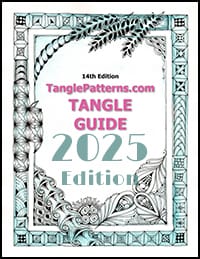 |
The 14th Edition of the TanglePatterns.com TANGLE GUIDE is an instant-download 117-page interactive digital eBook/PDF containing over 2,000 tangles on the site from May 2010 through December 31, 2024. It's a great resource and a must-have digital tool for using the site. Visit the STORE > E-BOOKS page and help keep TanglePatterns.com going by getting your copy now! |
|
"Linda, Thank you! I was relying on too few and getting stuck after 3 years of daily working with Zentangle. This has inspired me to ‘begin again’ with renewed excitement." ~ Barbara R. |
|
| See the BOOK REVIEWS page for more details on its features and view a sample page. Note: this is a digital product you download immediately when you place your order, nothing will be physically mailed to you. | |
| If you're new to Zentangle® and tangling, my TanglePatterns.com BEGINNER'S GUIDE TO ZENTANGLE is just what you need to get started. Also available en Français and en Español. | |
|
|
|
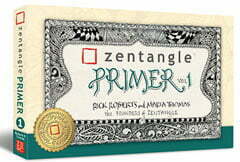 |
This is the only Zentangle book you'll ever need: the fabulous Zentangle PRIMER Vol 1. It's your CZT-in-a-book by the founders of Zentangle®. Visit the STORE tab on the top menu bar or click on the image. For more about the content and to read the rave reviews, visit the BOOK REVIEWS tab. |
| Now available in KINDLE format for $9.99. Spanish Edition here. Japanese Edition here. | |
| "Absolutely the best Zentangle Book yet! As an accomplished artist I used to think I did not need instruction on this art form. How wrong I was! My tangling improved by leaps and bounds after reading this book. If you think you have Zentangle down then you need this book more than ever!" ~ Kris H | |
|
|
|
|
.oOo. |
|

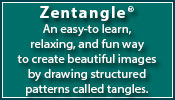
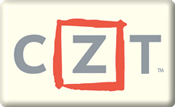

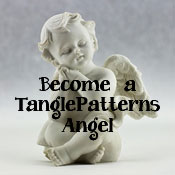
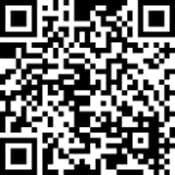

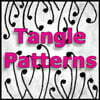
On various websites, I’ve noticed a LOT of extremely similar patterns with minor differences in stylistic details. Different sets of steps are then given for creating them. The “creator” is essentially posting only a derivative work.
The proliferation of Zentangle does make it difficult to be sure a pattern is truly original (is anything really original?), but folks could at least look around a little before claiming any “pattern” as their own. This site is the best resource on the web for doing that!
Thanks, Linda 🙂
Thanks very much, Trish. I do keep a pretty good handle on what’s being published online (and in the books) and make every effort to use the first instance of a pattern’s appearance. When folks submit a pattern to me that is derivative, I really hate to have to tell them so because I know it’s disappointing. It is clear they just aren’t familiar with what’s out there and are excited about “their” pattern. Often they will go ahead and post it somewhere else anyway, which is their option, but it does lead to the duplication you refer to.
thank you, having only recently discovered your resource I am so grateful for it. Can never understand why people want credit for anyone else’s work or reinvent the wheel if you want to share a simple link back to the prime source is easier and nicer. I understand the point about duplication its bound to happen and something I’ve fallen into have come up with my own ‘Sun Spot’ based on a picture of a sun spot and then discovering something very similer here (cannot remember what it is called just now) when I use it will look up the name and credit it together with a note of how I came up with it but before then if I may I’ll run it by you.
Love the resource and will continue to visit often.
You said: “When you create a piece of art in any form that incorporates a tangle/pattern, even sold on art and products, you do not have to label the patterns or credit their creators.”
My question is: “When a Tangle pattern is incorporated into piece (not the main emphasis)is that copyright infringement?” The only reason I would learn a new tangle is to incorporate it into my my art.
???
I suspect it’s actually a lot like the world of knitting and knitting patterns. Take, for example, socks. Socks have been around for a long time. No one knows who made the first sock. No one can copyright or trademark a sock. And even if you come up with a super new unique way of making a sock, the ONLY things you legally have copyright to are your images and description of how to make that sock. If I, as an experienced knitter, can look at your knitted sock and figure out how to do it, fair play to me. I can even write my own instructions on how to do it and take my own pictures of my work and put out a similar pattern, if I think the market is big enough.
I think you are lumping two different things in your fist example. Yes, taking text or images from someone else’s website is illegal. But, a specific *design* is not copyrighted. If another person sees something on a website, and then essentially goes to the same amount of work as the original website owner — i.e. draws her own set of steps, scans or takes her own picture, and posts her own comments — then they have NOT violated the first website’s copyright.
Saying that a specific pattern or design has been “copyrighted” by the originator is misleading. I have seen many pictures on various sites that show, say, a carpet pattern that the person then draws on white paper with a black pen. If your assertion is correct that the design is now “copyrighted” by that person just because they changed the format, what about the person who designed the original carpet? Wouldn’t that violate their “copyright” of that design? Of course not. It is like saying that someone somewhere owns the copyright to a grid, or a square, or polka dots, or the color blue. Even take a look at the background pattern of your site and tell me who owns the copyright to that?
You can, however, trademark unique spellings of names, which I suspect is behind the many unique names of many doodle designs, as well as other commercial products (i.e. something like Febreze or Kleenex).
…thanks Linda; yes I understand the implications mentioned here.
It is true, that newcomers to this art can be unaware that there may be a pattern out there somewhere else, other than the official Zentangle site, which is most similar already, to what they have created.
Where it happens, possibly an email to the author to bring it to their attention? I’m sure in many instances it could bring about a post to quantify a correction, and a new awareness overall.
At a recent meeting of the Toronto Bead Society, we had a great panel discussion on copyright as it applies to beadwork designers. I think some of it is applicable here.
In beadwork, there are several traditional stitches that have been around for a very long time, like for example the peyote stitch. No one can claim ownership of the peyote stitch. However, if I create a set of instructions for peyote stitch, then I own the copyright to those specific instructions.
You can see how that applies to tangles. Many tangles are based on architectural patterns, or ancient ornamental patterns, and no one can claim ownership of the patterns. But, if you create a series of steps to create the pattern, then you own the copyright on the steps. If someone else comes up with a different set of steps to create the same pattern, they are not infringing on your copyright.
…also, is it right for us to claim our drawings as Zentangles, when that name officially belongs to Rick and Maria?
Should we be naming our blog-posts something else other than Zentangling?
I don’t find Sandy’s distinction clear. If she means simply printing or selling the patterns per se whether as finished patterns or as steps to patterns, that makes sense and should have protection. On the other hand, If I do an original piece of work that uses any pattern whatsoever, I think the creator would be extremely hard pressed to cite me on a copyright issue since nearly all patterns are extremely simple and old. That may be what she means but I am confused by the tangles in “tangles/patterns” since I use tangles interchangeably with zentangles and I don’t think a zentangle violates copyright. If she is using tangle interchangeably with pattern (if she is, she would be right and I would be wrong and thus my confusion!) then it makes sense. Sorry if I confused anyone who wasn’t confused!
Carole… Because “Zentangle®” is a registered trademark, there are rules you need to abide by when using it. I refer to most of my artwork as “Zentangle Inspired Art”, which is a term Rick uses.
If you go to my blog:
http://zentangleharmony.com/
scroll all the way down to the bottom, you will see the reference to the Zentangle trademark. This appears on every page of my blog.
thank you Genevieve; I really appreciate your comment. It’s something I will add to my blog also from hereon in. Also will add a permanent reference to Zentangle trademark in my side-bar.
This is indeed a can of worms!! I’ll see if I can clarify a few things. 1. A “tangle” is a pattern or a design. ie: “Keeko” or “Knightsbridge” 2. A “Zentangle” is the combination of a bunch of these tangles that has been created following the Zentangle method. 3. Tangles/patterns cannot be copyrighted, unless perhaps they incorporate more illustrative elements. But, in general, not copyrightable. 4. Zentangle® is a trademarked word. There’s a whole other can of worms with that one! Anyone can use the term to describe their creation, but not to sell it. For example, only CZTs (Certified Zentangle Teachers) are allowed to use the word in advertising (ie: for a class or for ZT supplies). And, this will probably annoy a lot of people (!!?) – but no one should be using the word “Zentangle” in the names of their websites or businesses. (At the very least, you SHOULD get permission from Rick and Maria). For another example, if you sell Coca-Cola in your grocery store, you cannot have a website called http://www.SaraCocaCola.com Does that make sense? That is why so many people use “Tangle” instead. 5. Zentangle is a noun and if we use it as a verb… “zentangling”… it eventually loses it brand status. Think of Band Aid and Rollerblading. I know, I know, I say it too! But I try to remember to say “tangling” instead. Hope this all helps. And, again, when in doubt… ASK! When asked, the answer is almost always a smiling “yes”.
I actually wrote Rick and asked about using Zentangle patterns in my work for sale. This is what he said: “Thanks for asking. You don’t need our permission to use our patterns. Although we would appreciate an acknowledgment, such as “inspired by Zentangle” and, where appropriate, a link to our site. Also you can check this page for specific wording”
This is the actual web page: http://www.zentangle.com/legal.php.
hi really interesting reading the above copyrights comments, I noticed some polynesian elements and there are some patterns on this site that resemble many of them, is it legal to rename a pattern when it already has a name. Pacific art is very similar to the way ideas, patterns and designs are expressed. Though its great to see you have mentioned Maori art because they all have names to each design. Just curious.
I was about to delete some old messages when I read this one .Since I’m new to ZIart I was wondering in what way do I post possible new pattern with out violating another artists work? I follow some blogs but can’t follow all blogs :).
Thanks for asking this question!
When we think we have created a “new” pattern it’s only natural to get excited to jump in and publish it. But if you are new to this art form it’s a good idea to do your homework first. Not only because it’s fun and you’ll learn a LOT, but also because it’s up to you to make sure yours IS actually a new pattern. It is amazing how often people are subconsciously “programmed” by other patterns they’ve seen, and many are just universal in nature.
Between the 12 Zentangle books and online, there are well over a thousand tangle patterns already published. So check all these sources first and become familiar with the existing patterns. Have fun drawing them all and if in the process you prove to yourself that your pattern is new, then go ahead and publish it. If it’s that good, it can wait.
Another option that will save you time – you can email it to me first and for a small donation for my time, I’ll be glad to look at it and let you know to the best of my knowledge if your pattern is new. Contact me by email linda [at] tanglepatterns [dot] com if this is of interest to you.
Welcome to the great addiction! 😉
It is nice to see a clear statement about patterns not being copyrightable. I have been astonished by some zentangle bloggers claims that patterns are copyrighted and they are patterns that have been used for centuries around the world in various media/ textiles etc
Interesting comments above. When I first learned about Zentangles I was amaze to see patterns with new names that I’ve seen in Knitting, Crochet, Quilting pattern etc. and I could not believe that a repetitive pattern could be copyright when we live in a time that there isn’t a new pattern that has not been done before in other words a technique can not be copyrighted. This is why you can not copyright a technique you can copyright the design you made with the technique not the technique it self ..*smile*.. so when all the rukus came out about copyright I email Rick and Marie asking this:
“On 3/31/2010 8:45 PM, Ranie wrote:
Hello Rick and Maria,
I enjoy your newsletter very much but I do have some question conerning your copyright notice.
1. Writing about Zentangle
If you are writing about Zentangle, please:
Place an ® after Zentangle. (Zentangle is a registered trademark.)
Mention that Zentangle’s art form and method was created by Rick Roberts and Maria Thomas. (We have a patent pending.)
Refer or link to zentangle.com.
Are you saying people can not use the “word” zentangle at all unless they link it to your site?
Hi Ranie,
No, we’re not saying that, although netiquette practice would include referring to zentangle.com if you were writing about Zentangle.
Our main concern is to make sure that we’re diligent in maintaining Zentangle’s trademark status and not let it become generic.
Any questions, let me know.
Best,
Rick
—
z e n t a n g l e ®
http://zentangle.com”
Rick and Marie copyright the name that they created. So if you are writing an article, selling, advertising, giving a class using the word “zentangles” you must give credit where credit is due. If you are selling art that has repeptitive pattern in it known as Zentangles you may, just don’t use the word Zentangle. The word Zentangle is not your trademark.
There is an update to the Zentangle® legal page which discusses copyright and the implication from now on, including for non CZTs. I think this is essential reading for ALL Zentangle® enthusiasts who publish online, teach or otherwise.
http://www.zentangle.com/legal.php
Which brings up a techy tip for those using blogs.. if you need to add that ‘registered’ symbol next to something.. switch to html mode in your blog, and add ® (that’s an ampersand, an r, an e, a g and a semi-colon – all together, immediately following the word Zentangle, in case the commenting system converts the reg symbol)
Thanks for the great tip, Sadelle. I’m sure many were wondering how to do that.
I see that the symbols were converted when the comment showed up.. so if that wasn’t clear.. go this site and scroll down to the ‘in HTML’ section
http://fsymbols.com/computer/trademark/
I’m on a Mac but to put the ® sign in I use Opt+R. Not sure about PC but there is a shortcut 🙂
Hi, I sent Rick and Maria a photo of a fused glass version of Betweed I re-interpreted. (I watched Maria draw it in an instructional video,over and over!) I’m calling it a “glasstangle”. They were kind enough to put it up on their blog,(June or July 12th)and so I fortunately didn’t have to worry about copyright infringements! It has bothered me also, as I am inspired by so many different patterns, and would like to do more in glass, and want to be above board…If I see an especially eye-catching tangle, I will check in with the person who has the blog, website, etc. to be sure I’m not stepping on any toes before I take on re-creating it in another medium!!
Many thanks, Janis P.
I have been addicted to this since the summer of 2011, and have now started doing mandalas with some adapted tangles and original tangles incorporated. I had been working with applying color to mandalas from books and online the last few years, and was thrilled to see the new book published with zentangle mandalas. I just keep cranking them out, and I have been approached by a few people to give them a copy for a tattoo and/or cards, or to blow them up to larger works. I am so excited by the results and the response I am getting, but was concerned about the copyright issues. I have called the new creations zendalas. Is that cutting it too close?
I could send a copy from my facebook site, as I have them there for family and friends….thanks.
No, you’re good with “zendalas”, Lisa. There are many tanglers doing zendalas, so you’re in good company. The copyright issue refers mostly to copying other people’s creative product without permission.
As I understand it, when artists go to New England to learn this craft, they PAY Rick and Maria to teach them step by step instructions on how to create beautiful art and therefore they “buy the rights” to use the already existing tangle patterns that Rick and Maria created. Therefore, no copyright infringement. When the new CZTs went home and had classes and we paid to learn what the CZTs paid to learn, we also “bought the rights” to use the already exisgting patterns in our own art. However, if you copy line by line an existing picture, pattern or anything like that without the knowledge of the artist or without “buying the rights” – then you are guilty of copywrite infringement. So – once we have taken classes that we paid for and “bought the rights” to use the patterns, then we are not guilty of anything except creating gorgeous things for us to enjoy and also to make us feel good about everyone thinking we are oh so artsy!
The specific word for word instructions and specific images can be copyrighted but not the general instructions. Otherwise, geometry textbooks would all be contravening copyright laws for telling students how to construct octogons etc.
If I come up with what I think are better instructions to re-create a pattern there is no legal or moral reason for me not to publicize them even if some of the steps are the same as someone else’s steps.
Most of the designs are based on traditional patterns that people have been using for centuries. Rick and Maria acknowledge that. Outside of the community “tangles” are called “motifs”. Anyone is free to write instructions on how to recreate patterns. There are only so many ways to say “draw a line” so sometimes aspects of a set of instructions will overlap with someone else’s set of instructions. That doesn’t make the work derivative any more than similar geometry instructions.
When I look at these patterns, I have to tell you that I am having an issue with copyright issues here. I am 54 years old, and I drew many of these patterns when I was a young person – over 30 years ago. Many of the design elements are exactly like the ones I drew, and I still incorporate them into my art now. I do not feel inclined to get permission from someone when I had already done this so long ago — way before ZTangles came about. I do not want to be worried about design elements in my art when I create it, i.e., that someone is going to get a lawyer and sue me for copyright infringement. I am always extremely careful and respectful of other people’s work, giving credit, not stealing, etc. However, does that mean I have to dig up all of my childhood work to be able to prove I had already drawn something exactly the same as on this sight? Just playing devil’s advocate here….
Hi Marusia,
It appears you’ve misinterpreted the information about copyright so you might want to re-read the article. This is about copying other people’s work. Or using their images without permission. Both of which, unfortunately, happen all too frequently.
I recommend you download Interweave’s free eBook – it spells things out very clearly for every artist or craftsperson. Here is the link: https://tanglepatterns.com/2012/04/new-free-ebook-copyright-for-crafters-and-artists.html
This reminds me of the squabbles about who invented the wheel. You cannot prohibit people from drawing a circle or a line. Neither can you prove that someone has not incidentally hit on a pattern you consider to be “yours”.
But of course, blatant copying and commercialization of artworks that you have not yourself created is illegal.
I’m surprised there are people “doing art” who don’t know this.
Maybe they should go back to coying someone’s else recipe for hamburgers!
I have been reading all of these comments, to clarify, Rick & Maria came up with and copyrighted the word “Zentagle” for designs and doodles that have been drawn in some instances for 100’s of years. It is the word “Zentagle” that needs permission to be used? As I see for designs, to draw and use them and claim it as ones own would be extremely difficult to prove, as most of these types of drawings have been around for much longer than most of us. As a former teen “doodler” from the 80’s I have doodled, drawn or tangled some of these very designs seen on blogs, and Pinterest were they are being claimed as an original design. Now I would not take a picture of a butterfly that has been “tangled” and or “doodled” draw the same thing and call it my own. On the other hand, if I drew my own butterfly and put my own design in it, even if some were similar, that would be my own, right? It’s all so confusing.
Hmm … where to start … first of all, the registered trademark is spelled Zentangle®. (I can’t tell if your spelling was a typo since you used it more than once.)
The Zentangle trademark has nothing to do with copyrighted designs or doodles. It has everything to do with the step-by-step method of the art form and the teaching method related to it. That is why we state the Zentangle® art form and method was created by Rick Roberts and Maria Thomas and is copyrighted.
As far as using the term “Zentangle” please see this post from earlier this week which clarifies how the term Zentangle can and can’t be used: https://tanglepatterns.com/2013/03/guidelines-for-creating-zentangle-inspired-art-and-products.html
You might want to read the page “What is a Zentangle” because I have a feeling you might not have read it yet.
There is also a very good free eBook “Copyright for Crafters and Artists” that every artist should have and refer to. You can find the link to download it on that page.
Hope that helps clarify some of your confusion! Happy tangling …
My mom introduced me to this site and I have been obsessed ever since! Love it!
I would like to know the preferred behavior when it comes to cards/gifts. Is it okay to make Zentangles as cards for birthdays of friends and family?
My granddaughter is a 4-H member who has gotten into the Zentagle art. Does she need copyright permission to display an art work she would create that incorporates several of the designs? Does she need permission if she were to do a working exhibit where she demonstrates the art?
Please see these pages:
https://tanglepatterns.com/2012/04/new-free-ebook-copyright-for-crafters-and-artists.html
and
https://tanglepatterns.com/2013/03/guidelines-for-creating-zentangle-inspired-art-and-products.html
As far as demonstrating the Zentangle art form, I recommend you get in touch with Rick and Maria at zentangle.com to discuss it first. There’s also more information under the heading “Sharing and Teaching Zentangle’s Method” on this page:
http://www.zentangle.com/index.php?option=com_content&view=article&id=28&Itemid=29
Hope that helps!